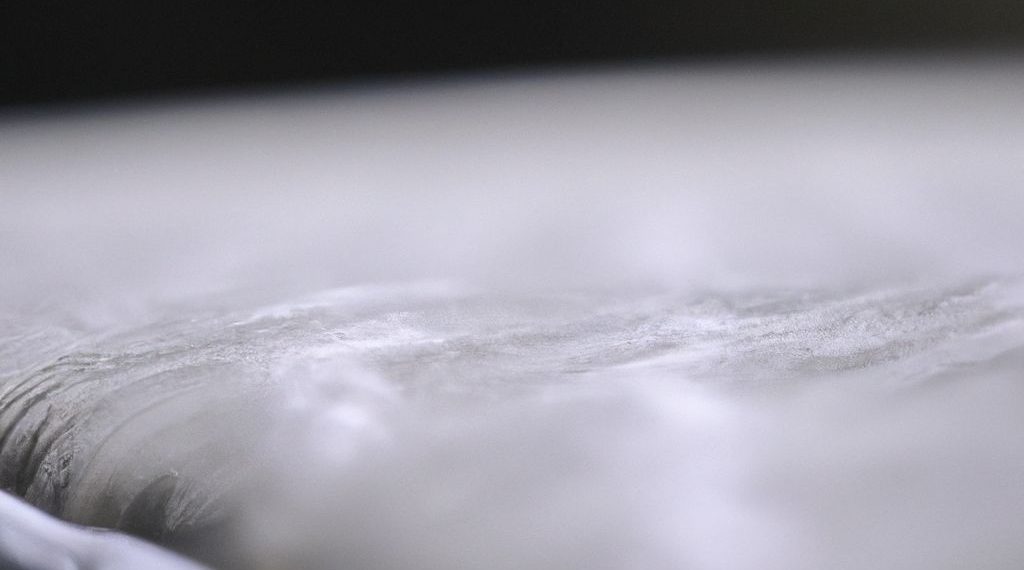Key Takeaway:
- A clean and mold-free sleeping environment is crucial for maintaining good respiratory health and avoiding potential dangers associated with exposure to mold spores.
- To identify signs of mold on a memory foam mattress, regularly check for visual indicators such as discoloration or black spots, as well as olfactory indicators such as a musty smell.
- To prevent mold growth on a memory foam mattress, maintain proper humidity levels in the sleeping environment, ensure adequate air circulation in the room, use mattress covers and waterproof protectors, and regularly clean and air out the mattress.
- If mold is present on a memory foam mattress, follow a step-by-step guide for removing the mold, which includes gathering necessary materials and personal protective equipment, preparing the mattress for cleaning, treating the mold-infested areas, and drying and deodorizing the mattress.
- It is important to replace a moldy memory foam mattress to avoid the health risks associated with sleeping on it. Consider replacing a mold-infested mattress when mold growth is extensive or when it cannot be effectively cleaned and deodorized.
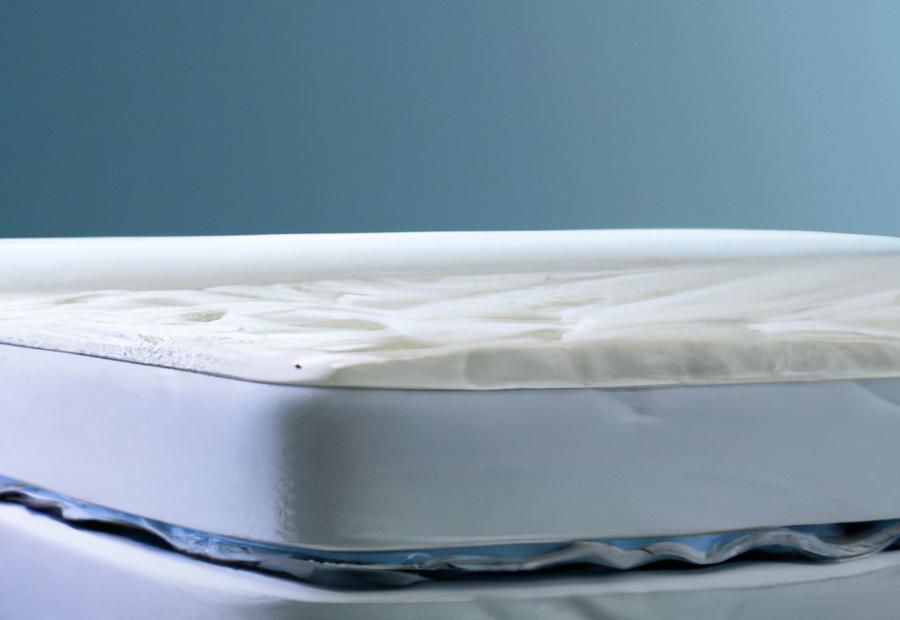
Photo Credits: Www.Mattressreviewguru.Com by Gabriel Roberts
A clean and mold-free sleeping environment is crucial for ensuring a healthy and comfortable night’s sleep. In this section, we’ll delve into the importance of creating such an environment, exploring the potential hazards of mold on a memory foam mattress. Stay tuned to discover effective solutions and preventive measures that can help you keep your mattress clean and mold-free, promoting better sleep quality and overall well-being.
Importance of a clean and mold-free sleeping environment
A mold-free sleeping space is essential for healthy rest. Mold on memory foam mattresses can be harmful to our respiratory system. Signs of mold on the mattress need to be taken seriously. Visible spots, discoloration, and musty smells can indicate mold growth.
To stop mold growth, it is important to keep humidity levels low. Dehumidifiers and air conditioners, as well as opening windows and using fans, can help. Mattress covers and waterproof protectors can act as barriers against moisture, dust mites, and molds. Cleaning and airing out the mattress should also be done regularly.
If mold is detected, follow the steps for removal. Gather gloves, cleaning solutions, and PPE. Vacuum any debris, treat the affected areas, dry the mattress, and deodorize it.
Mold exposure can cause allergies and worsen existing conditions. It is important to address mold growth immediately and consider replacing the mattress. Preventive measures, such as inspections, humidity control, protective covers, and cleaning, can help stop the growth of mold on memory foam mattresses.
Understanding the risks of mold on memory foam mattresses
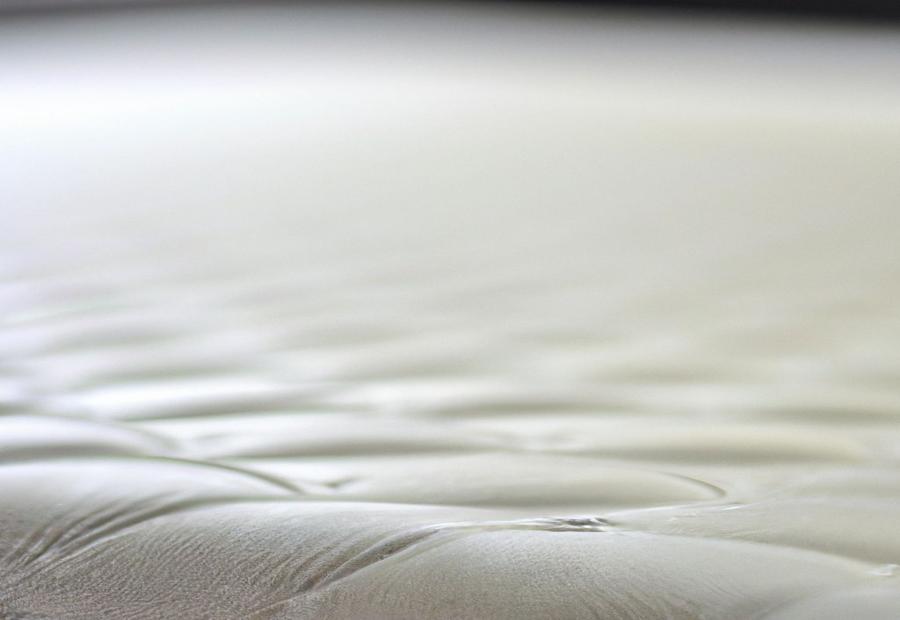
Photo Credits: Www.Mattressreviewguru.Com by Dylan Martin
Exposure to mold on memory foam mattresses can pose serious risks to your respiratory health and overall well-being. As we delve into the potential dangers of mold spores, stay informed about the impact this can have on your body. From compromised lungs to increased allergies, understanding the risks associated with mold on memory foam mattresses is essential for maintaining a safe and healthy sleep environment.
Impact of mold on respiratory health
Mold growth on a memory foam mattress can be hazardous to respiratory health. Mold spores can be airborne and breathed in, leading to allergic reactions and asthma attacks. These spores can also cause inflammation and irritation in the airways, causing coughing, wheezing, and shortness of breath. Prolonged mold exposure may result in respiratory infections or worsen existing conditions.
It’s important to address mold growth immediately to lower the risk to respiratory health. Keep the sleeping environment at the correct humidity level with a dehumidifier or ventilation system. Airflow is also essential, as still air encourages moisture and mold growth. To further protect against mold, use mattress covers and waterproof protectors.
Potential dangers of exposure to mold spores
Mold spores can pose a potential danger. They are released when mold grows on a memory foam mattress. Inhaling these particles can have a damaging effect on our respiratory health. Allergic reactions and respiratory issues such as asthma can be triggered and prolonged exposure can lead to more severe health issues.
It is important to know the risks of mold spores on a memory foam mattress. They are extremely small and can easily be inhaled. Once inside our bodies, they can cause irritation and inflammation in the airways. Symptoms like coughing, sneezing, wheezing and difficulty breathing can result.
Mold spores also produce mycotoxins which are toxic and can cause headaches, fatigue, allergic reactions and neurological problems.
To prevent mold growth, humidity levels should be maintained in the sleeping environment, air circulation should be adequate, mattress covers and waterproof protectors should be used, and the mattress should be regularly cleaned and aired out.
If a memory foam mattress has been infested with mold and remediation isn’t successful, or the mattress is severely damaged, it is best to replace it. This will help ensure a mold-free environment and better respiratory health.
Identifying signs of mold on a memory foam mattress
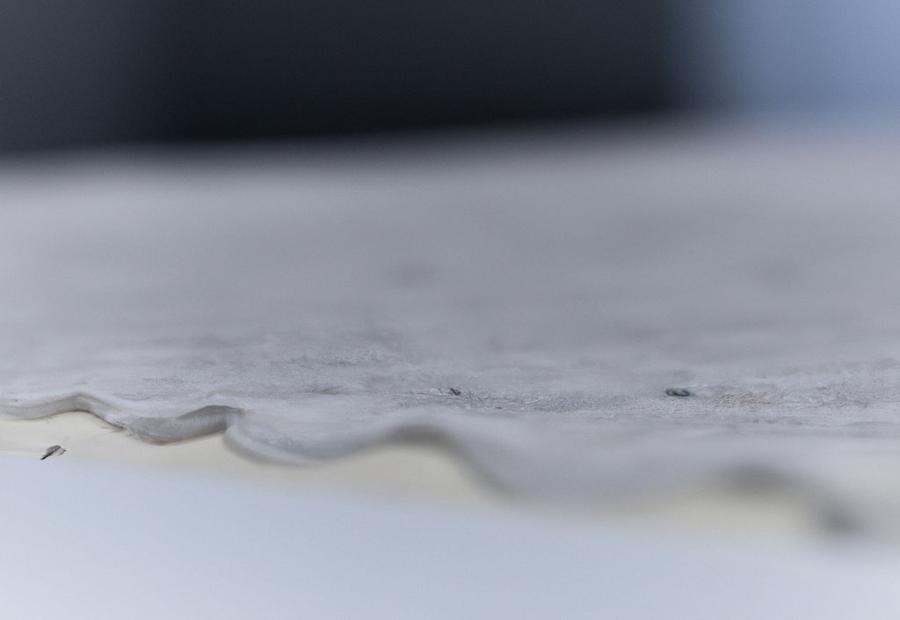
Photo Credits: Www.Mattressreviewguru.Com by James Campbell
Identifying signs of mold on a memory foam mattress: Learn about visual and olfactory indicators of mold growth.
Visual indicators of mold growth
Mold stains can appear as dark, discolored patches on a memory foam mattress. Additionally, mold growth can cause discoloration. This may show up as a darker hue or a greenish, brownish, blackish color compared to surrounding areas.
Fuzzy or powdery textures can be an indication of mold growth. Also, clusters or spores of different colors and sizes may be visible.
Musty odors and respiratory symptoms may accompany mold growth.
It is important to consult professionals to accurately determine if mold is present.
Being aware of visual indicators of mold growth is important for taking preventive measures and maintaining a clean and safe sleeping environment.
Olfactory indicators of mold growth
It’s important to remember that not all molds emit a scent, and some people may not be able to sense these odors. However, if you do notice any smells in your sleeping environment, it could mean mold on your memory foam mattress.
When it comes to knowing the signs of mold growth on a memory foam mattress, one often looks for visual signs such as discoloration or spots. But olfactory indicators can also be helpful.
Musty smells, damp scents, earthy aromas, and distinctive odors associated with mold may all be present. So looking out for these can help address potential mold issues.
To prevent mold growth on a memory foam mattress, it’s essential to take steps. Keeping humidity levels in the sleeping environment low can stop mold growth. Circulating air in the room with fans or open windows can reduce moisture. Using mattress covers and waterproof protectors is also recommended. Clean and air out the mattress regularly to prevent dust accumulation and mold spores from forming.
In conclusion, understanding olfactory indicators of mold growth can help maintain the condition of your memory foam mattress. Being aware of musty smells, damp scents, earthy aromas, and distinctive odors associated with mold, you can take action to address potential issues. Taking precautionary measures such as maintaining proper humidity levels, promoting air circulation, using protective covers, and regular cleaning can help prevent mold growth and keep your sleeping environment clean.
Precautionary measures to prevent mold growth on a memory foam mattress
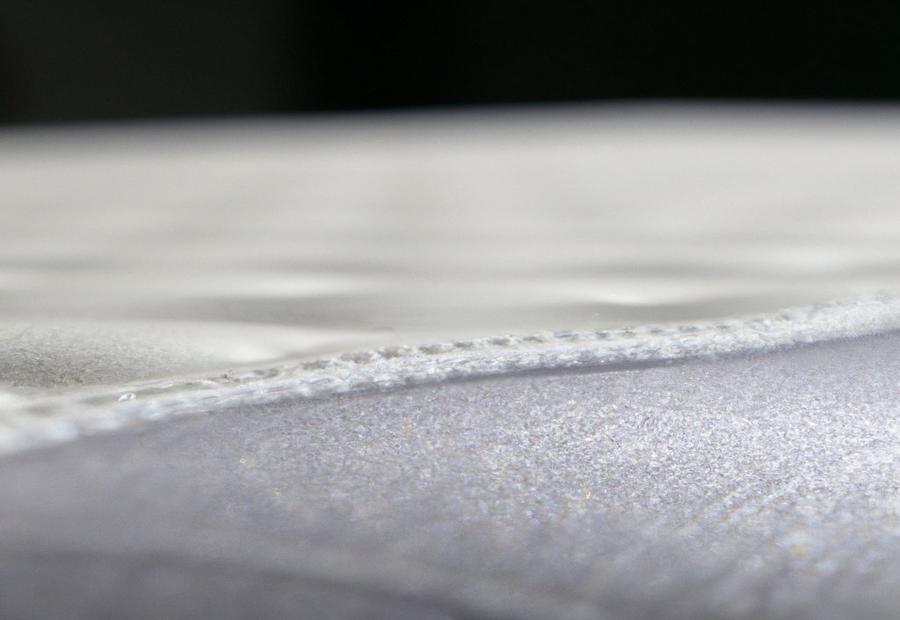
Photo Credits: Www.Mattressreviewguru.Com by Larry Johnson
Prevent mold growth on your memory foam mattress with these precautionary measures: maintaining proper humidity levels, ensuring adequate air circulation, using mattress covers with waterproof protectors, and regularly cleaning and airing out the mattress. Keep your sleeping environment mold-free for a healthier and more comfortable sleep.
Maintaining proper humidity levels in the sleeping environment
For optimal humidity, keep relative humidity below 50%. Excess moisture can lead to mold growth in mattresses. Use a dehumidifier or air conditioner to regulate moisture levels.
Improve air circulation in the room. Ventilation helps expel moisture and stop condensation forming on surfaces. Open windows or use fans.
Use mattress covers and waterproof protectors. These barriers create a physical barrier against moisture and spills.
Clean and air out the mattress. Vacuum the surface regularly. Let sunlight reach the mattress by opening curtains/blinds.
Pro Tip: Check the manufacturer’s guidelines for cleaning instructions. Excessive dampness or harsh chemicals may damage memory foam mattresses.
Don’t let your room become stale – keep mold away with good air flow!
Ensuring adequate air circulation in the room
Mold on memory foam mattresses can cause respiratory problems and poor health. To keep the air clean and mold-free, here’s a 5-step guide:
- Open windows or use a fan. This allows fresh air to circulate and reduce moisture.
- Utilize natural ventilation. Place your bed near windows or doors to let in fresh air.
- Use ceiling fans or portable fans. These help create a steady flow of air.
- Keep interior doors open. This creates pathways for airflow.
- Regularly clean HVAC systems. This ensures fresh, filtered air is circulating.
Follow these tips to prevent mold growth and maintain a healthy sleeping environment. Plus, use mattress covers and waterproof protectors to keep mold away!
Using mattress covers and waterproof protectors
To prevent mold growth on a memory foam mattress, mattress covers and waterproof protectors are key. These protective barriers act as a physical shield, blocking moisture and creating an unfavorable environment for mold. The impermeable design of these covers prevents sweat and spills from coming into contact with the mattress.
Utilizing mattress covers and waterproof protectors creates a barrier that blocks moisture from entering the mattress. This is important because memory foam mattresses have a tendency to absorb and retain moisture, which can lead to mold growth. These coverings safeguard the mattress from dampness, reducing the risk of mold accumulation.
Mattress covers and waterproof protectors offer additional protection against dust mites and allergens. The covers act as a hypoallergenic barrier, preventing particles like dust, pollen, and pet dander from settling on the mattress. This helps keep the sleeping environment clean and reduces respiratory issues for those who suffer from allergies or asthma.
Moreover, these protective coverings extend the life of memory foam mattresses by shielding them from stains, spills, and general wear and tear. The waterproof feature ensures liquids do not seep into the mattress foam layers. This allows individuals to enjoy their investment for a longer period of time without compromising its quality or integrity.
Using mattress covers and waterproof protectors is essential for preserving the hygiene and longevity of a memory foam mattress. These coverings create a reliable barrier against moisture infiltration and provide protection against allergens and stains. Additionally, it is important to regularly clean and air out the mattress for a healthy and mold-free sleep experience. Remember, your dreams should be filled with unicorns, not mold spores!
Regularly cleaning and airing out the mattress
- Gather necessary materials and personal protective equipment for cleaning the mattress.
- Remove bedding or covers, and place it in a well-ventilated area.
- Clean thoroughly using cleaning products and techniques.
- Pay special attention to areas with mold.
Regularly clean and air out the mattress. This helps with removing moisture and odors, preventing mold growth. Maintain proper humidity levels, ensure adequate air circulation in the room, and use mattress covers and waterproof protectors.
If mold persists despite cleaning, or if there are concerns about long-term exposure, replace the mattress promptly. Prioritize cleanliness and maintenance for a safe and comfortable sleep experience.
Step-by-step guide to removing mold from a memory foam mattress
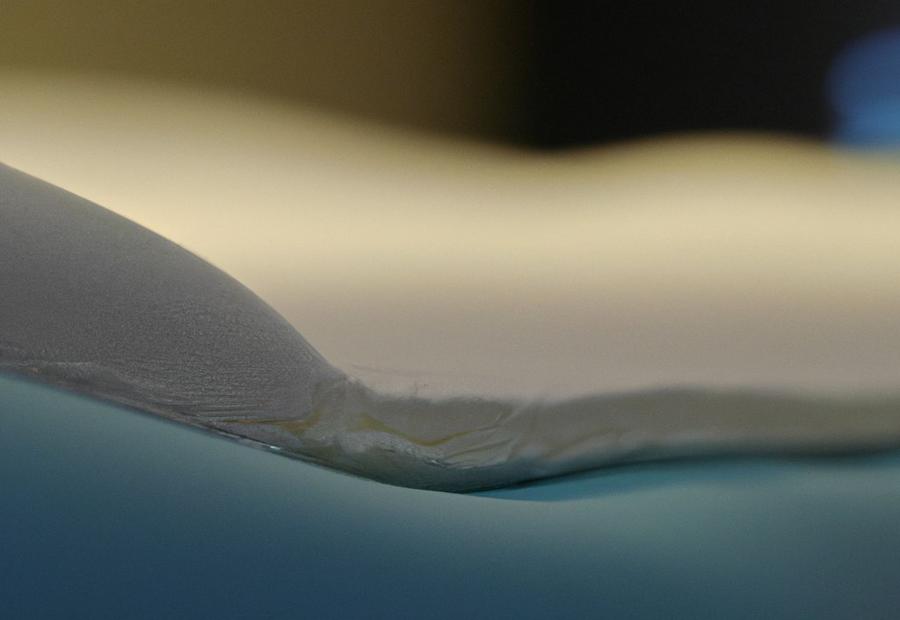
Photo Credits: Www.Mattressreviewguru.Com by Adam Williams
In this step-by-step guide, we’ll discover how to effectively remove mold from a memory foam mattress. We’ll begin by gathering the necessary materials and donning personal protective equipment. Next, we’ll explore the process of preparing the mattress for cleaning. Then, we’ll delve into treating the mold-infested areas with proven techniques. Finally, we’ll cover the essential steps for drying and deodorizing the mattress, ensuring a clean and healthy sleeping environment.
Gathering the necessary materials and personal protective equipment
Preparing correctly is super important when removing mold from a memory foam mattress. You need to get the right materials and protective gear. These include:
- Gloves
- A face mask (like an N95 respirator)
- Safety goggles
- Cleaning solutions
- Soft brushes, sponges or cloths
It’s vital to get these things together before beginning the clean. Dispose of any contaminated materials carefully, like in sealed plastic bags. Follow these steps to reduce spread of mold spores.
- Try to work in a breezy area to help air flow and reduce exposure to mold spores. Open windows and use fans if available.
- Be aware that bad mold infestation may need professional help.
Preparing the mattress for cleaning
To get the mattress ready for cleaning, it is essential to include all the keywords.
- Firstly, clear the area around the mattress. Remove items like pillows, sheets, and blankets that could block or slow down the cleaning.
- Vacuum the entire mattress with an upholstery attachment. This will take out dirt, dust, and mold spores from the mattress surface. Vacuuming is a significant part of preparing the mattress.
- Do a spot test on an unnoticeable area of the mattress. This helps to make sure no discoloration or damage occurs during cleaning. Spot testing is essential.
- If there are stains on the memory foam mattress, pre-treat them as advised by the manufacturer. Wait for the stain remover to penetrate and act on the stain. Pre-treating stains is vital.
- Allow ventilation in the room. Open windows or turn on fans for adequate ventilation. This avoids moisture build-up and allows fresh air circulation during and after cleaning. Ventilation is key.
- Consider potential health risks associated with exposure to mold spores and put on personal protective equipment (PPE). Wear gloves and a mask when handling and cleaning a mold-infested memory foam mattress. PPE is necessary.
By following these steps, effective mold removal can be done without causing damage or health risks. Properly preparing the mattress also improves the sleep environment and reduces potential health risks related to sleeping on a mold-infested surface.
Treating the mold-infested areas
Mold on a memory foam mattress must be treated quickly to avoid further spread and health risks. Follow these steps for proper treatment:
- Get the items needed: Gloves, mask, brush/sponge, mild detergent, hydrogen peroxide/vinegar, waterproof cover.
- Prepare the mattress: Take all bedding and covers off and move outside or to a ventilated area.
- Treat the mold-infested areas: Clean with a mix of warm water and detergent using a brush or sponge. Use peroxide/vinegar for tougher stains/growth. Don’t saturate the mattress.
- Dry the mattress: Put it in a well-ventilated area or direct sunlight to dry completely.
- Deodorize: Sprinkle baking soda and let it sit for several hours/overnight.
- Replace any damaged covers: So the mattress isn’t recontaminated.
It’s important to act quickly when mold is present – to avoid health issues. Follow the steps carefully and you’ll have a clean, mold-free mattress. Plus, it won’t smell like a fungi party!
Drying and deodorizing the mattress
- Gently blot affected areas with absorbent towels or cloths to remove excess moisture. Don’t use too much pressure.
- Place a fan or dehumidifier near the mattress for air circulation. Make sure the area is well-ventilated.
- Sprinkle baking soda over the entire surface of the mattress. This acts as a natural deodorizer and helps absorb odors. Leave it on for several hours or overnight.
- Vacuum with an upholstery attachment to remove all traces of baking soda. Focus on crevices and seams where mold spores may be lingering.
- Allow the mattress to air dry completely before using it again. This can take several hours to a few days depending on size and humidity.
These steps can help mitigate mold issues but if it’s severe or recurring, replacing the mattress may be necessary. Sleeping on a moldy mattress can pose health risks and affect sleep quality. If you notice persistent mold growth or adverse health effects, consult a professional.
Importance of replacing a moldy memory foam mattress
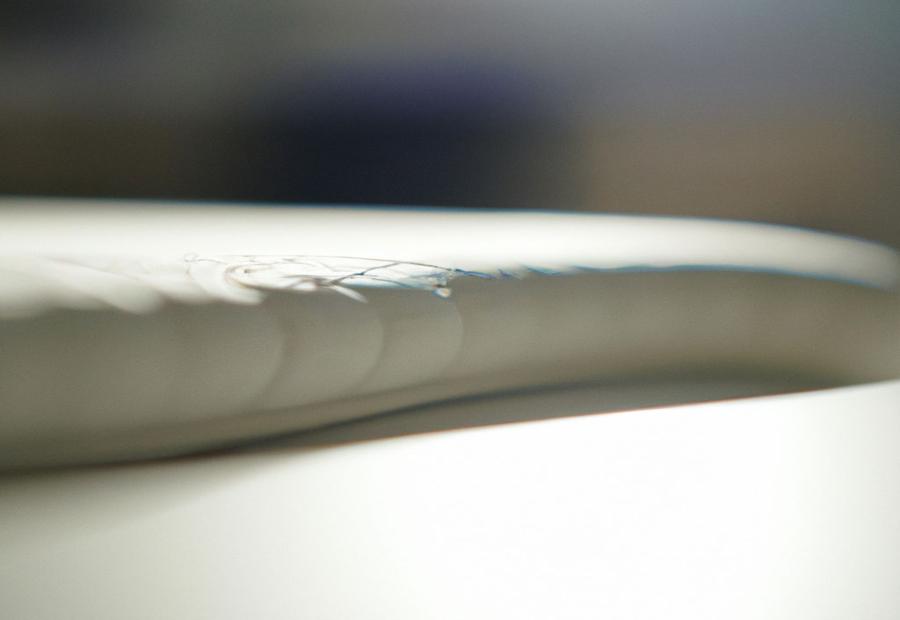
Photo Credits: Www.Mattressreviewguru.Com by Jack Hernandez
Replacing a moldy memory foam mattress is crucial for your health and well-being. Discover the potential health risks linked to sleeping on a moldy mattress and when it’s necessary to consider replacing a mold-infested mattress. Protect yourself and ensure a clean and comfortable sleep environment. Don’t compromise on your sleep quality and learn why taking action is essential.
Health risks associated with sleeping on a moldy mattress
Sleeping on a moldy mattress can be hazardous to your health. Mold spores can cause respiratory issues, such as allergies, asthma, and infections. Even worse, exposure to mold can lead to mycotoxicosis, with symptoms such as fatigue, headache, nausea, and even memory loss.
It’s important to remember that mold growth signals a moisture problem. This allows dust mites to thrive, worsening respiratory symptoms. To avoid these risks, you should clean and maintain a dry sleeping environment. Use mattress covers or waterproof protectors to create a barrier against moisture.
In conclusion, moldy mattresses can be dangerous, especially for those with respiratory or immune problems. To stay safe, regularly clean and monitor your sleeping environment. If you suspect mold growth despite your efforts, it may be time to replace the mattress. Waiting for miracles won’t help – it’s time to say goodbye to your sleep sanctuary.
When to consider replacing a mold-infested mattress
Mold-infested mattresses should be changed fast. This is to prevent any health risks arising from sleeping on a moldy mattress. Mold can release spores into the air. These can cause respiratory problems and other issues. Also, it is hard to remove mold from a memory foam mattress, even with cleaning and treatment. So, replacing a mold-infested mattress is better than trying to salvage it.
When mold infests a memory foam mattress, it is a threat to physical health and well-being. The spores can cause coughing, wheezing, chest tightness. These can make existing respiratory conditions like asthma or allergies worse. In extreme cases, it can even lead to serious health issues like chronic bronchitis or fungal infections.
Removing mold from a memory foam mattress can also be hard. Mold grows deep in porous materials like foam and fabric. It is hard to remove completely without expert help. Even after cleaning, spores may stay in the mattress, and still pose a risk.
When deciding whether to replace a mold-infested mattress, one should think of the severity of the infestation and the cost of replacement. If there is extensive mold growth or if the person using the mattress has been having health problems related to mold exposure, they should invest in a new mattress. This will ensure a clean and safe sleeping environment, free from the dangers of mold-infestation on memory foam mattresses.
Conclusion
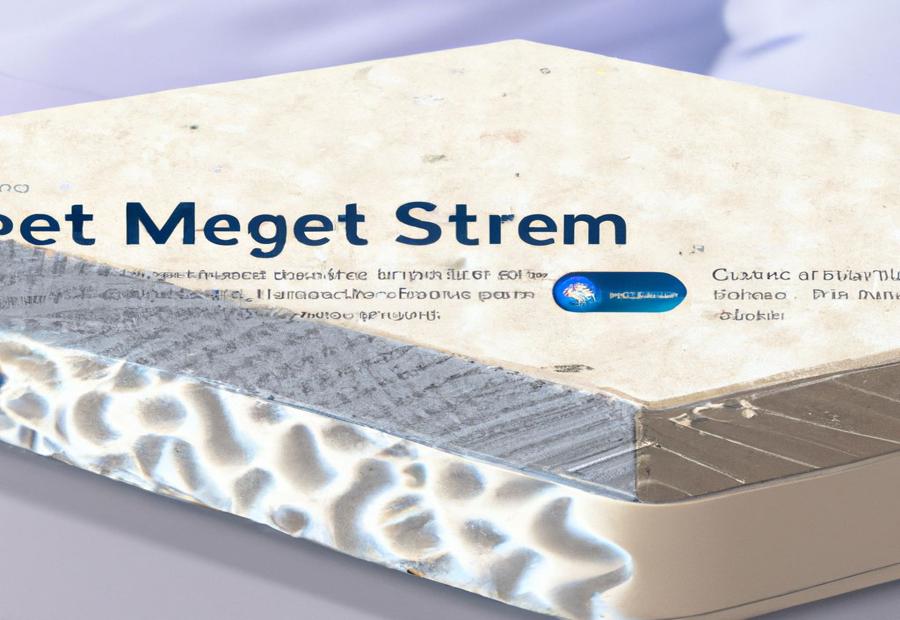
Photo Credits: Www.Mattressreviewguru.Com by Matthew Campbell
To protect your health, it is essential to address mould growth on memory foam mattresses swiftly. Mould can cause allergies and respiratory problems, so it is critical to take the necessary steps to remove it. Firstly, use a vacuum cleaner with a HEPA filter to suck up any loose mould spores and stop them from spreading. Then, mix equal parts water and distilled white vinegar. Spray the affected area with this solution and leave it for at least 30 minutes. The vinegar has antimicrobial properties that can kill mould spores. Next, use a clean cloth to blot the area and get rid of any extra moisture. Be careful not to use too much water as it can damage the foam material of the mattress. Let the mattress air dry thoroughly before using it again. In addition to the cleaning process, it is important to identify the cause of the mould growth. Make sure the mattress is dry and has good ventilation. A breathable and waterproof mattress protector can help prevent future mould growth. Inspect the mattress regularly for any signs of mould or mildew. Take immediate action if any is found. By following these preventive measures and correct cleaning techniques, you can eliminate mould from your memory foam mattress and keep a healthy sleep environment for years to come.
Some Facts About How To Get Mold Out of Memory Foam Mattress:
- ✅ Prevention is key to avoiding mold on a memory foam mattress. (Source: Team Research)
- ✅ There are several methods to remove surface mold from a memory foam mattress, including using rubbing alcohol, warm water, and an upholstery disinfectant. (Source: Team Research)
- ✅ Hydrogen peroxide can also be effective, but it is important to check the mattress label first as it may not be suitable for bleaching. (Source: Team Research)
- ✅ If the mold is persistent, a commercial cleaner designed for mattresses or upholstery can be used. (Source: Team Research)
- ✅ Mold on a memory foam mattress is a sign that it needs to be replaced, as there is no way to remove mold from the deeper parts of the mattress. (Source: Hunker)
FAQs about How To Get Mold Out Of Memory Foam Mattress
How can I remove mold from my memory foam mattress?
To remove mold from a memory foam mattress, start by vacuuming both sides thoroughly to remove any mold spores. Then, mix mild dishwashing detergent with hot water to create a soapy solution and gently sponge the mold-affected area. Rinse with warm water, absorb excess moisture with a cloth, and allow the mattress to dry completely. Another alternative is to use a mixture of rubbing alcohol and water to clean the mold. Always refer to the mattress’s care guide for specific cleaning instructions.
Can I remove mold from the deeper parts of a memory foam mattress?
No, it is not possible to remove mold from the deeper parts of a memory foam mattress. Once moisture and mold spores penetrate the foam, they cannot be fully removed. Mold growth in the core of the mattress can continue even if the surface appears mold-free. If mold is present in the deeper parts of the mattress, it is recommended to replace the mattress to avoid health risks associated with mold exposure.
What are the signs of mold growth on a memory foam mattress?
Signs of mold growth on a memory foam mattress may include musty smells, dark spots, warping materials, or fluffy-looking spots. Physical symptoms such as wheezing, skin rashes, congestion, and itchy or watery eyes could also indicate mold growth. If you notice any of these signs, it is important to take action to prevent further mold growth and potential health issues.
How can I prevent mold growth on my mattress?
To prevent mold growth on a mattress, it is essential to keep it dry and in a well-ventilated area. Use a waterproof mattress protector to protect it from moisture. Ensure proper airflow in your bedroom by using a breathable base, such as a slatted bed system, and avoid placing the mattress directly on the floor. Additionally, keep wet towels, clothes, swimsuits, and hair off the bed to prevent moisture buildup.
What should I do if my memory foam mattress has mold?
If your memory foam mattress has mold, it is recommended to have it professionally treated or replace it. Long-term mold exposure can cause serious health issues, and mold cannot be completely removed from the deeper parts of the mattress. It is not worth the risk of using a moldy mattress that can potentially affect your respiratory health and overall well-being.
Are there any home remedies I can use to clean mold off a memory foam mattress?
While it is best to have a moldy memory foam mattress professionally treated or replaced, there are some home remedies you can try. For surface mold, you can clean the affected area with a mixture of rubbing alcohol and water or a diluted solution of dish soap and water. However, these home remedies may not completely eliminate the mold, and it is important to prioritize your health and consider professional treatments or replacement if mold persists.

